The prairie is an oft-overlooked but critical ecosystem. Prairies once covered about one-third of the United States, serving as the habitat for countless plant and animal species. Sadly, most of North America’s grasslands have disappeared. In some states, such as Illinois, less than one percent of the original prairie is still intact. This is just one reason that planting a prairie garden rather than a garden of non-native plants is such a great choice.
There are many benefits to keeping a prairie garden. In addition to providing much-needed support to the local ecosystem, a prairie garden can be exceptionally beautiful. Colorful grasses and stunning wildflowers offer a rainbow of colors, scents, and textures to delight the senses. Many prairie plants offer special benefits like flood-proofing and natural protection from pests. Most prairie plants are deep-rooted perennials that come back on their own year after year. So, once they’ve been established, prairie gardens can be much easier to maintain than non-native gardens.
Starting a prairie garden is exciting but it can also be a bit overwhelming, as there are hundreds of different native grassland plants to choose from. To help get you started, here is a guide to 15 plants that could be a perfect fit for your prairie garden.
1. Prairie Phlox
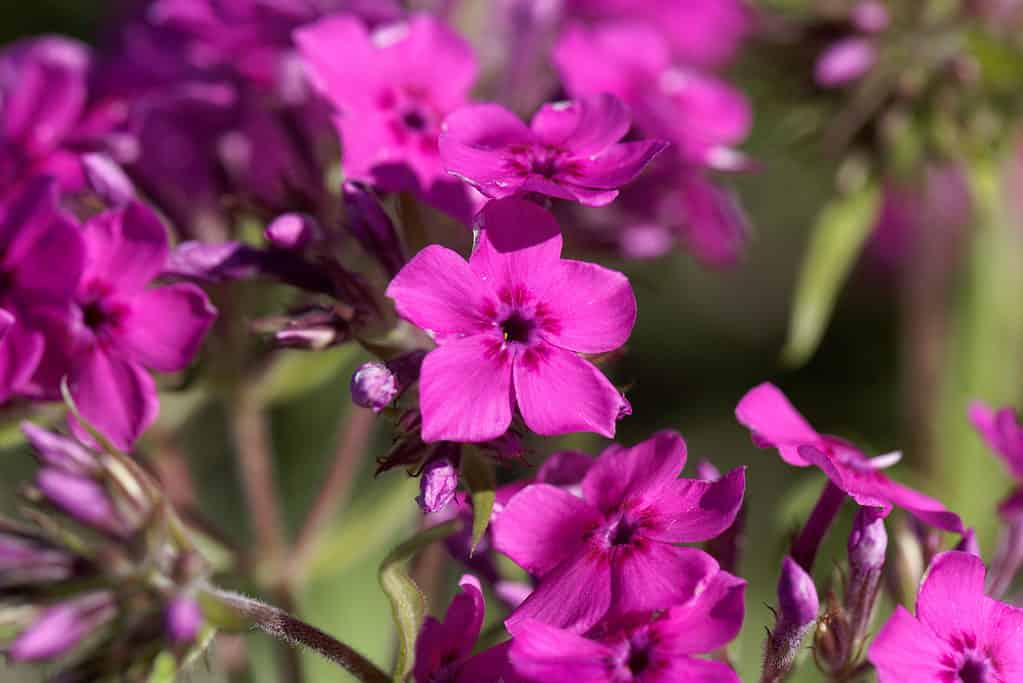
The fragrant flowers of the prairie phlox plant attract many pollinators.
©ChWeiss/Shutterstock.com
Prairie phlox (Phlox pilosa) is suitable for any sunny prairie garden, especially when planted in a sandy soil. Its uniquely pretty flowers look almost like pink paper cutouts. Prairie phlox is a favorite among pollinators. It blooms brightest in June.
2. Wild Lupine

Wild lupine is the only source of food for Karner blue
butterfly
caterpillars.
©Brian Woolman/Shutterstock.com
The beautiful and adaptable wild lupine (Lupinus perennis) is perfect for sunny and shady gardens alike. Prairie lovers admire this plant for its unique, pea-shaped, blue blooms. Notably, wild lupine is the only plant that caterpillars of the Karner blue butterfly can eat. So, if you live in the range of this endangered insect (in Wisconsin, Michigan, Ohio, New York, or New Hampshire), then wild lupine is a particularly good choice for your prairie garden.
3. Prairie Smoke
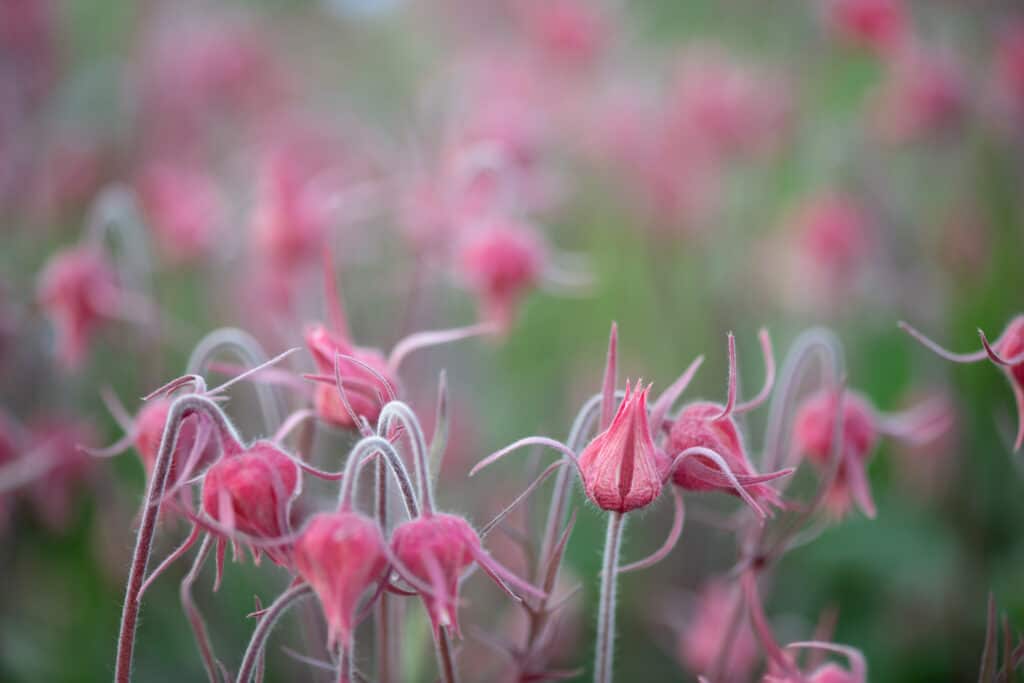
The distinctive flowers of the prairie smoke plant bloom early in spring.
©iStock.com/Page Light Studios
Prairie smoke (Geum triflorum) is known for its unique, nodding flowers. After pollination, the flowers transform into fruits with wispy, smoky plumes. This plant is one of the first to bloom in spring. Pick this species if you want to see color in your garden as early as April, and ethereally beautiful plumes in the summer.
4. Black-Eyed Susan
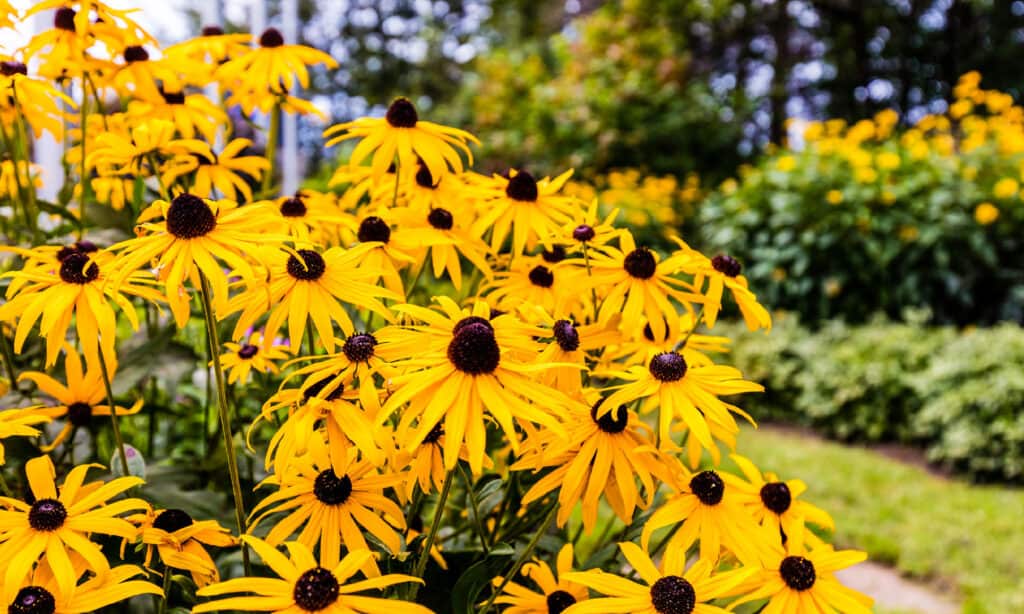
Black-eyed Susan is a hardy prairie plant that often grows along roadsides.
©iStock.com/Dopeyden
Everyone knows and loves black-eyed Susans (Rudbeckia hirta)! These hardy prairie plants belong to the sunflower family. The Ojibwa, Menominee, and other indigenous peoples of North America have traditionally used black-eyed Susan as a medicinal herb.
5. Prairie Blazing Star

Monarch butterflies love prairie blazing star flowers.
©Media Marketing/Shutterstock.com
Prairie blazing star (Liatris pycnostachya) is an iconic prairie plant that is known to thrive in gardens. It consists of a single spike of densely packed, purple flowers that bloom from the top down in late summer. Prairie blazing stars grow to around 20 inches, and sometimes up to 6 feet tall.
6. Little Bluestem
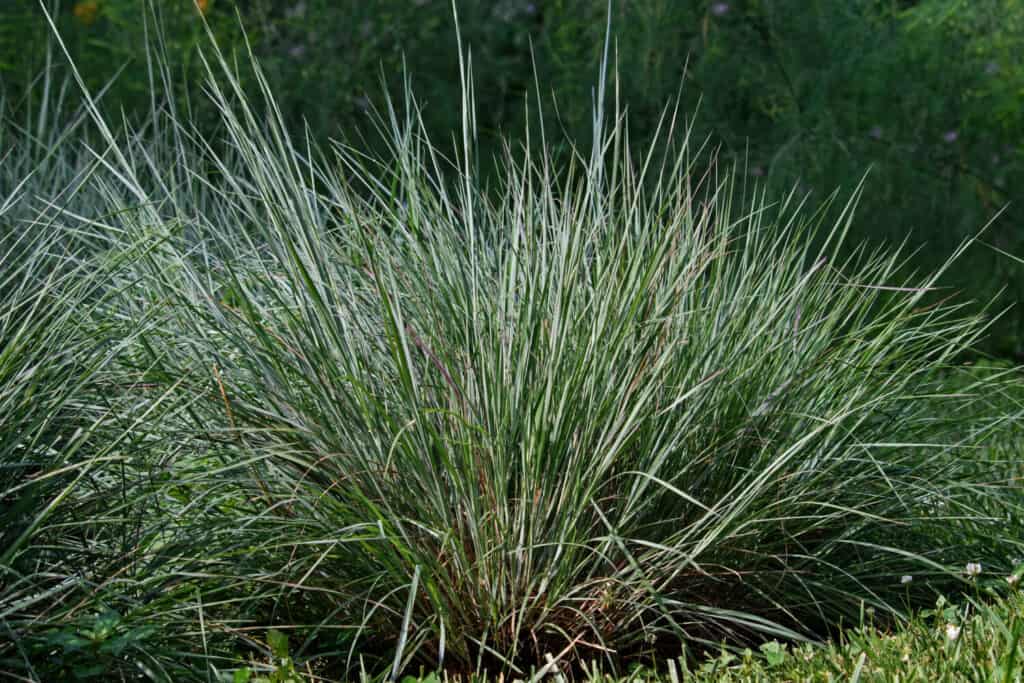
Native grass species are an important element in a prairie garden.
©Michael G McKinne/Shutterstock.com
No healthy prairie garden is complete without a native grass species. Prairie grasses like little bluestem (Schizachyrium scoparium) support other prairie plants and are beautiful in their own right. Little bluestem is a bunching grass that grows with a blue hue and takes on lovely warmer tones later in the season. Finches, eastern meadowlarks, dark-eyed juncos, and other native birds use this plant for food or as a nesting site.
7. Prairie Dropseed

Prairie dropseed is green early in the season and turns a rich, golden color as it matures.
©ANECEPTIUS BAMBANG SUTOPO/Shutterstock.com
Whimsical tufts of hairlike leaves make the prairie dropseed (Sporobolus heterolepis) a popular choice in prairie gardens. This grass species can grow in any of a number of dry or moist conditions. Keepers of prairie gardens note that prairie dropseed is among the more wonderfully fragrant of the prairie plants.
8. Sideoats Grama

This unique prairie grass gets its name from the seeds that dangle on one side of its stems.
Another great grass option for your garden is sideoats grama (Bouteloua curtipendula). This charming grass is distinct in its appearance because of the row of spiked “oats” (which are actually seeds) that dangle from it. Sideoats grama is a hardy grass and it does well even in drought conditions.
9. Purple Prairie Clover
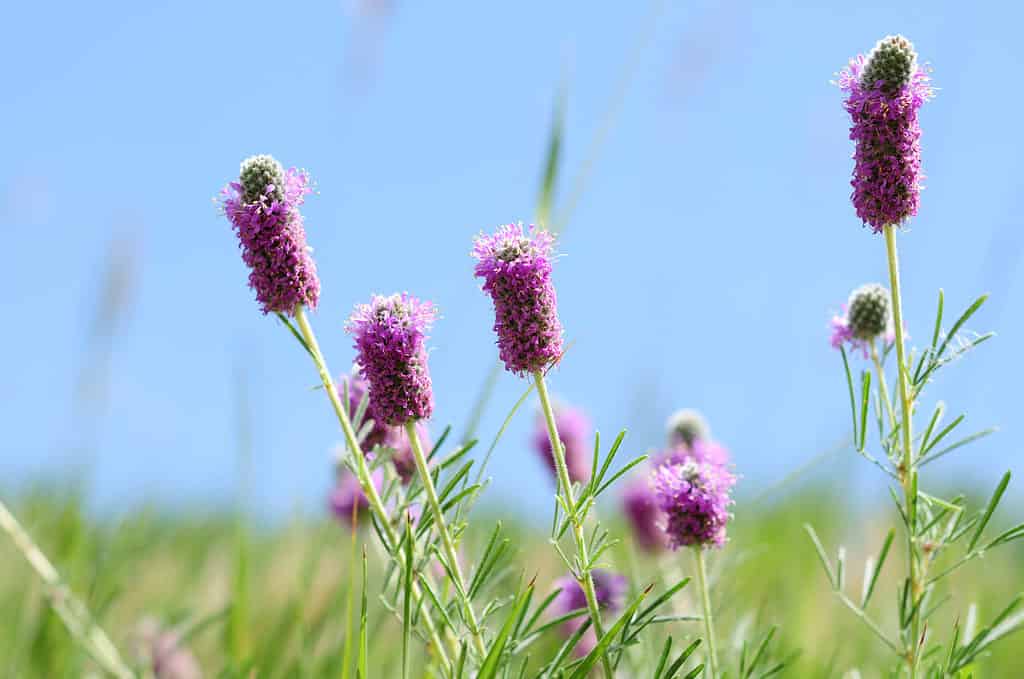
Purple prairie clovers are known to do well in native gardens.
©Sean Xu/Shutterstock.com
Like prairie blazing star, purple prairie clover (Dalea purpurea) grows spikes of clustered flowers, except purple prairie clover’s flowers bloom from the bottom of the spike up to the top. The beautiful purple clusters attract honey bees and other pollinators. In the wild, purple prairie clover is often found living alongside prairie dropseed, so it could be a good idea to choose both species together for your garden.
10. Virginia Mountain Mint
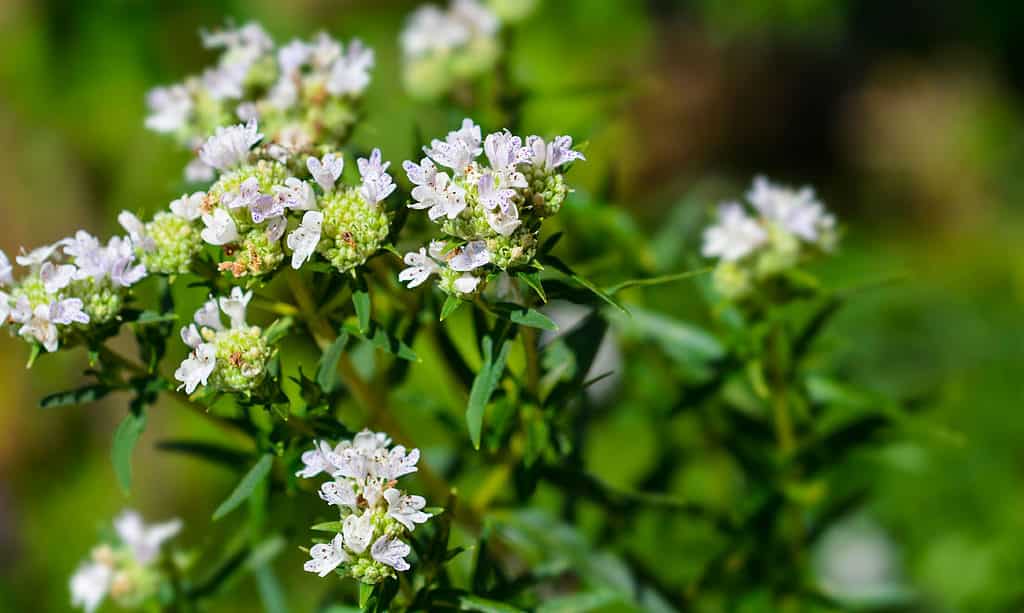
Virginia mountain mint is a strongly aromatic prairie plant.
©iStock.com/Nahhan
Don’t be fooled by its name! Virginia mountain mint (Pycnanthemum virginianum) is, in fact, a prairie plant. It gives off a wonderful, minty scent, particularly when the leaves are crushed. The little, white flowers of this aromatic plant bloom in late summer.
11. American Pasqueflower
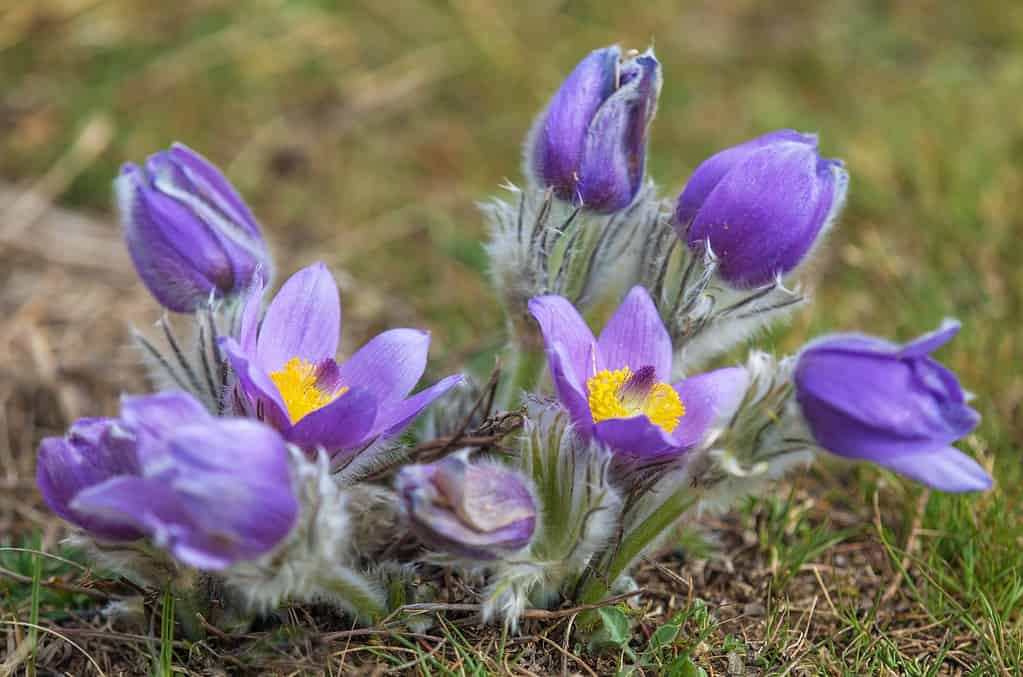
The American pasqueflower’s unique flowers bloom in spring.
©Daniel Prudek/Shutterstock.com
The American pasqueflower (Anemone patens) thrives in cooler climates. It sometimes blooms while there is still snow on the ground. This prairie plant’s stunning, bell-shaped flowers are purple or white. They grow on short stems that are covered in silky hairs.
12. Sweet-Scented Joe-Pye Weed
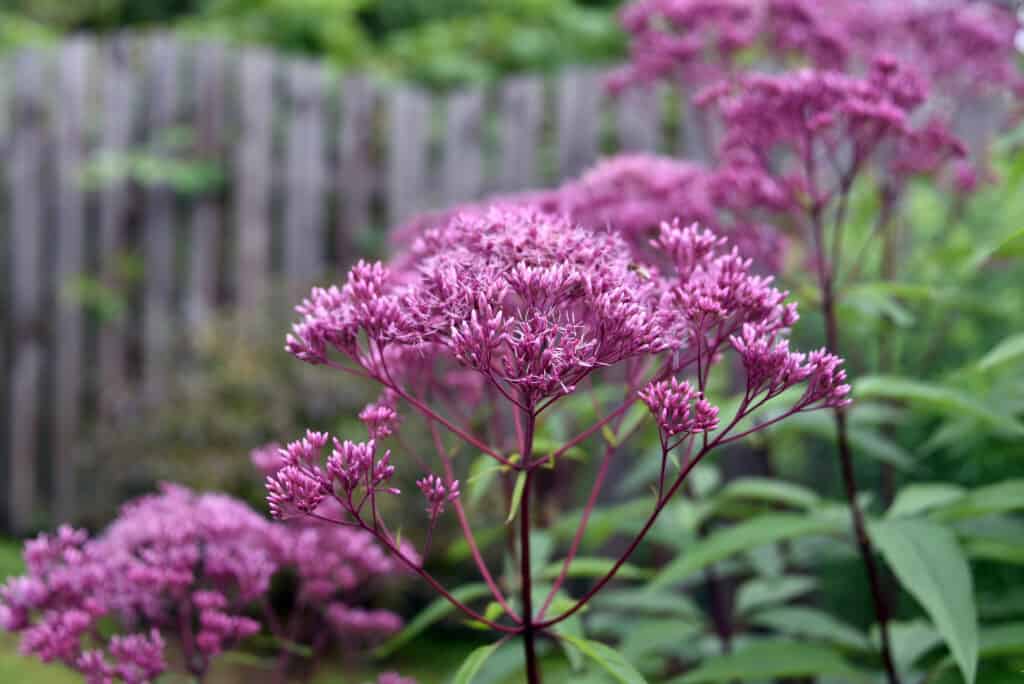
Another name for sweet-scented Joe-Pye weed is Queen of the Prairie, thanks to its tall height and beautiful, purple flowers.
©Andrey_Nikitin/Shutterstock.com
Sweet-scented Joe-Pye weed is a hardy plant that can tolerate full sun or partial shade. It can grow up to 6 feet tall, making it a great option if you want to add height to your prairie garden. The Cherokee, Chippewa, and Navajo are among the indigenous North American peoples who have traditionally used this plant to treat a variety of health issues.
13. Indian Paintbrush
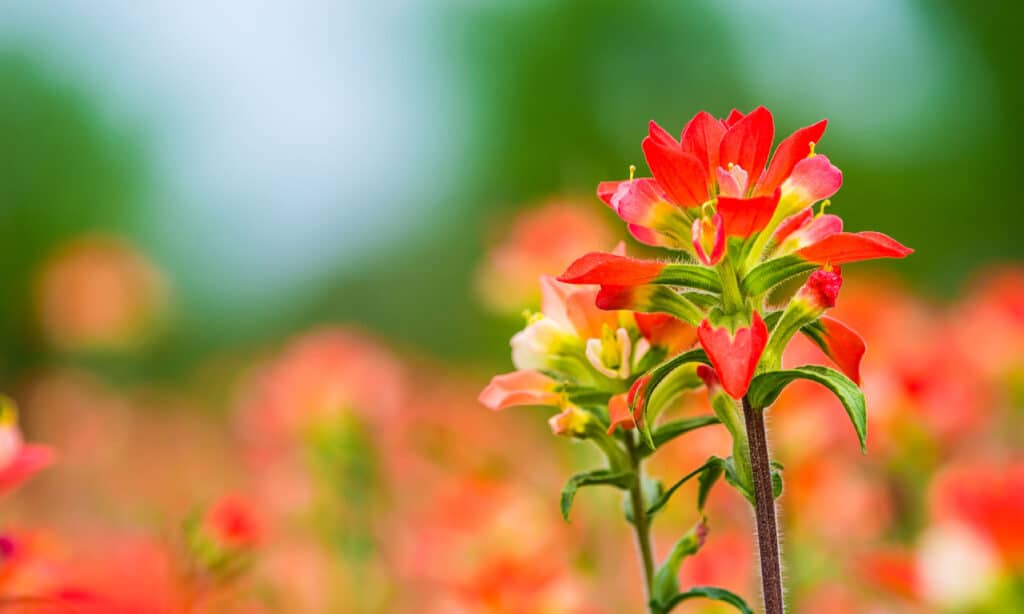
Nature enthusiasts and gardeners prize Indian paintbrush for its eye-catching, scarlet bracts.
©iStock.com/leekris
For a stunning splash of red in your prairie garden, try planting Indian paintbrush (Castilleja coccinea). You will need to be patient; Indian paintbrush is a biennial plant and you will probably have to wait until the spring following your planting season to see it grow. Indian paintbrush does best while grown alongside a host plant that can help provide it with nutrients. Little bluestem grass is a good option for this purpose.
14. Purple Coneflower
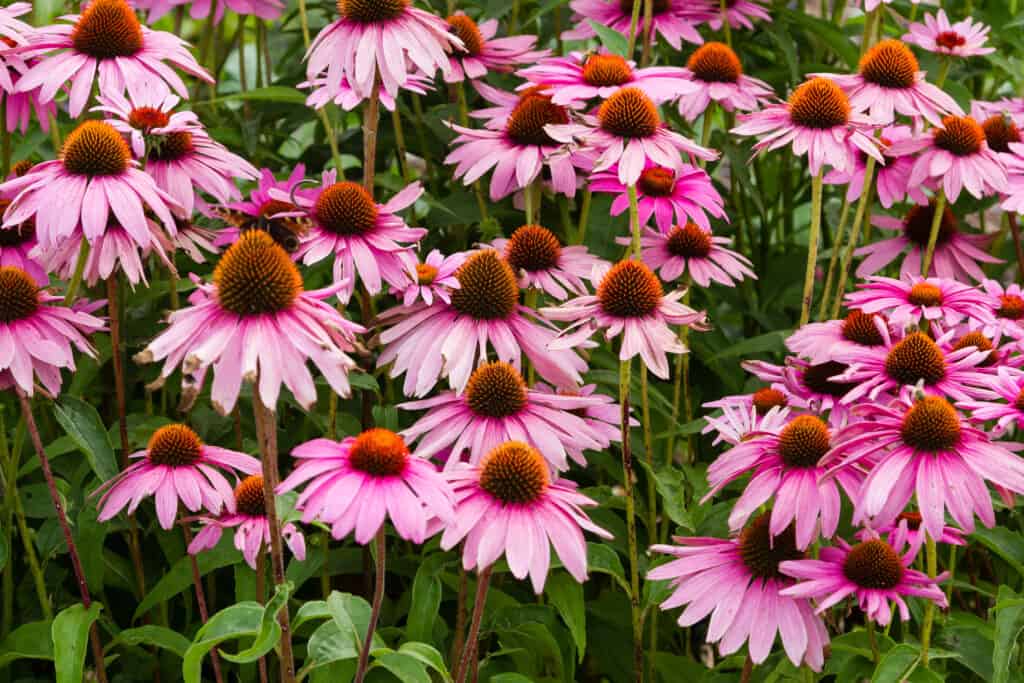
The large, bright petals of the purple coneflower attract a wide range of pollinators.
©Milosz Maslanka/Shutterstock.com
There is good reason for the popularity of purple coneflower (Echinacea purpurea) among prairie gardeners. In summer, this easily maintained wildflower produces rich lavender blooms that last around two months. In addition to serving as a showy garden plant, purple coneflower is commonly used as an herbal health supplement. Studies have shown that this prairie plant contains substances that can boost the immune system and help relieve pain and inflammation.
Editor’s note: Always check with a health professional before using your garden plants for medicinal purposes.
15. Butterfly Milkweed
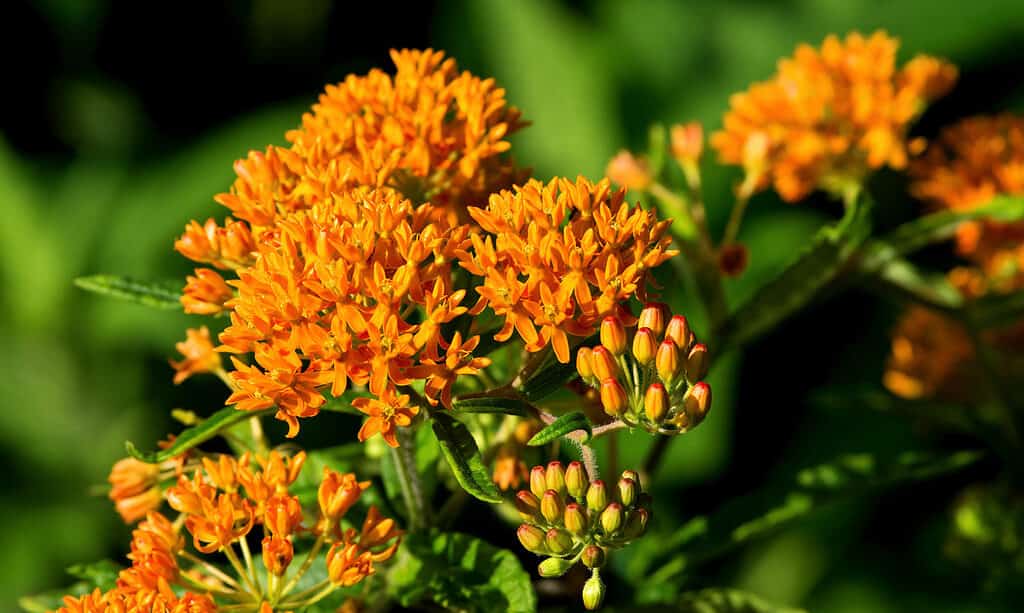
Butterfly milkweed is also commonly called butterfly weed.
©iStock.com/McKinneMike
Last but certainly not least is the gorgeous butterfly milkweed (Asclepias tuberosa). The bright orange blooms of this prairie wildflower attract monarchs and many other butterfly species. Monarch caterpillars rely solely on milkweed plants for their food. Planting milkweed in your garden is an excellent way to help this endangered species survive.
Summary of 15 Plants That Are Perfect Fits for Prairie Gardens
| Number | Prairie Garden Plant |
|---|---|
| 1. | Prairie Phlox |
| 2. | Wild Lupine |
| 3. | Prairie Smoke |
| 4. | Black-Eyed Susan |
| 5. | Prairie Blazing Star |
| 6. | Little Bluestem |
| 7. | Dropseed |
| 8. | Sideoats grama |
| 9. | Purple Prairie Clover |
| 10. | Mountain Mint |
| 11. | American Pasqueflower |
| 12. | Sweet-Scented Joe-Pye Weed |
| 13. | Indian Paintbrush |
| 14. | Purple Coneflower |
| 15. | Butterfly Milkweed |
The photo featured at the top of this post is © Media Marketing/Shutterstock.com
Thank you for reading! Have some feedback for us? Contact the AZ Animals editorial team.







